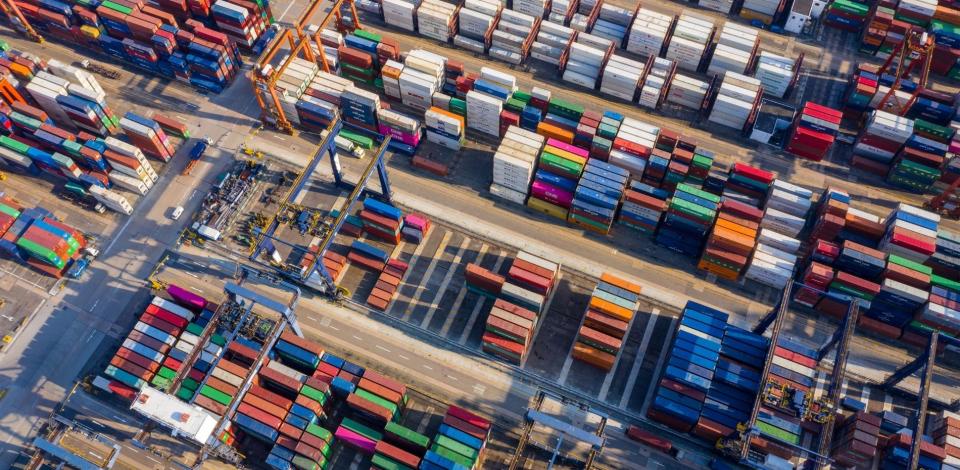Supply Chain Crisis Persists as Holiday Season Approaches
Nearly two years into the pandemic and global manufacturing has yet to recover

Since the start of the pandemic, consumers and retailers have faced global shortages in nearly all categories of goods, from toilet paper to computer chips. While we are over 18 months removed from the onset of pandemic-induced irregularity, the effects on the supply chain have not worn off, causing logistical stress across the globe.
Now, the holiday season looms, forewarning another strain on an already bottlenecked industry.
Despite predictions for the highest holiday retail sales on record, manufacturers across the country are under immense pressure, fighting order backlogs, delivery delays, material shortages, and spikes in transportation prices.
How will the current supply chain crisis impact you, and how will it affect the holiday season? Here's a look at what you might expect to see and why now may be the best (and only) time to purchase gifts for your loved ones.
The Ongoing Impact on Global Supply Chains
Ever since March 2020, demand inconsistency and fluctuation — first a rapid decline and then a massive increase with a shift in consumer buying patterns — has strained supply and delivery chains, forcing them to ramp up operations and bend over backward to meet quotas.
“Some manufacturers pivoted because they saw that the products they're making weren't in demand,” notes Mike Stonecipher, group manager for strategy and leadership development for the Georgia Manufacturing Extension Partnership (GaMEP) at Georgia Tech. “Those that had the ability to shift to other products did. They also looked into additional capital, workforce increases, and different or flexible schedules, but also they started investing in technology.”
The pandemic and resulting lockdown not only compounded online buying behavior but also altered demand trends. Freight transportation carriers were canceled, factories abroad shut down, and workers everywhere were displaced — all detrimental factors to supply chain flow.
"The global reach of Covid-19 has meant that we are dealing with large-scale disruptions across industries and along the full length of our supply chain instead of isolated disturbances," notes Mathieu Dahan, assistant professor in the H. Milton Stewart School of Industrial and Systems Engineering at Georgia Tech. "As a result, the ripple effects are far-ranging, and we are still experiencing the repercussions from last year’s shutdowns and shortages."
The 2021 Holiday Season
Even as the Covid-19 crisis begins to dissipate, its effects on the supply chain remain and threaten to disrupt the upcoming holiday season.
Retailers are already experiencing inventory and shipping panics that usually don't take hold until the week before Christmas, as backlogs at ports around the country have left brick-and-mortar shelves depleted of popular products.
"While some of the shortages are due to logistical challenges, others have been prompted by psychological factors, affecting all actors within the supply chain," notes Karthik Ramachandran, associate professor in the Scheller College of Business, who studies product strategy issues in operations management.
What's more, supply chain shortages may also impact Thanksgiving and Christmas staples, such as turkeys, cranberry sauce, and artificial trees.
“We’re seeing bottlenecks in the shipping and logistics segments of our food supply,” explains Wendy White, a nationally known food safety and supply chain expert who works with GaMEP. “We are lucky to have a wide variety of raw agricultural products here in America, but we’re going to see some disruptions with food ingredients and components that are only available overseas.”
The best thing that consumers can do to counteract this supply chain crisis is spread out the demand. That means expect higher prices across the board, buy early, and be flexible if you can.
"As we build the resilience of the system, our supply chains will eventually stabilize,” Dahan predicts. “However, we will continue seeing impacts this holiday season in the food and toy aisles."
Repairing the Supply Chain
While it will take some time for supply chain bottlenecks to be alleviated, widespread labor shortages have added long-term implications for how the supply chain functions. In July, the warehouse and transportation industry had a record 490,000 openings, a problem plaguing nearly every industry as part of the "Great Resignation."
“Employers don’t have the labor to manage, process, and unload goods and services effectively, resulting in slow delivery times and shipping delays across the entire supply chain,” notes Tim Brown, managing director of the Supply Chain and Logistics Institute at Georgia Tech. “These shortages are not only exacerbating the holiday shopping season, but they are also limiting economic growth in local areas.”
While repairing the supply chain disruption won’t be an easy or quick fix, Brown notes that these disruptions will remain unless the skills gap is addressed.
“As Baby Boomers leave the workforce, there are not enough younger workers entering the supply chain and manufacturing industries to fill the open jobs,” he says. “If we want to respond effectively to future disruptions, we must attract, train, and retain skilled workers.”
These challenges and the rate of change pose serious implications not only for the warehouse and logistics sector, but also for other knowledge-intensive industries like cybersecurity, engineering, and financial services. An agile and adaptable workforce will be key to navigating the workplaces of today, tomorrow, and the future.

